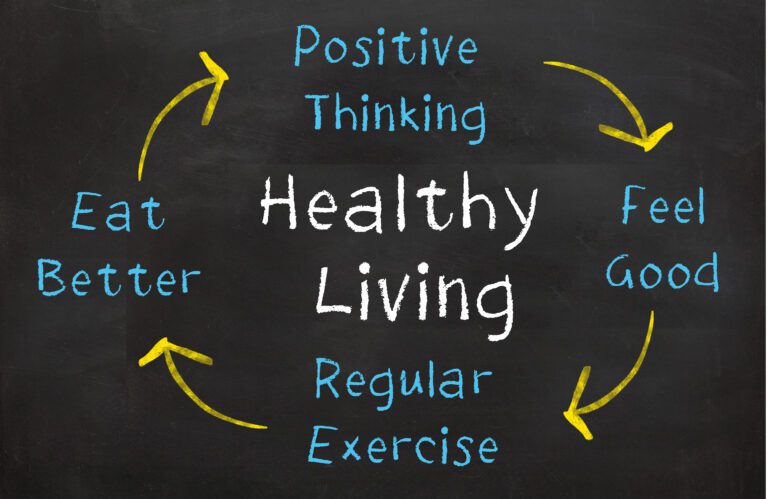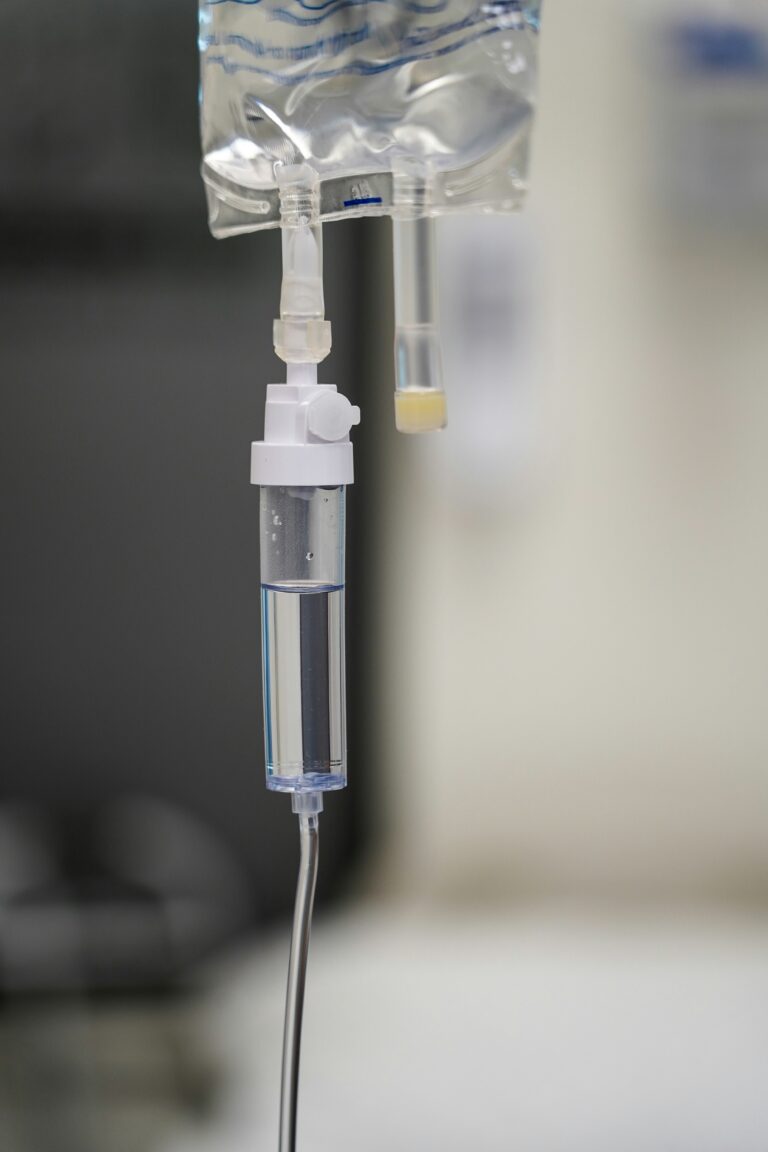How To Take Small Proactive Steps That Lead to Stability
Progress is something you need to gauge regularly. Reviewing your progress will help you decide if the treatment plan you are following is successfully managing your bipolar disorder. Successfully managing your bipolar disorder will lead to greater stability. This will give you more control over your illness.
The result is stability.
Lifting Weights is Similar to Bipolar Disorder
My favorite form of exercise—weight lifting—is a great metaphor for the progress I make in managing my bipolar disorder.
I keep a journal of all my workouts. During each workout, I record the weight I lift and how many repetitions and sets. I use this record to compare to my previous week of training. I can see how much progress I have made (or not made) regarding the weight lifted, repetitions, and sets.
Just because one variable decreases does not mean I am not making progress. Sometimes I need to change up my workout routine. This is similar to changing up my treatment plan.
Our journey with bipolar disorder mimics that of weight lifting.
Extreme highs and lows characterize the overall battle of bipolar disorder. Energy, motivation, and the ability to function are part of the daily bipolar battle.
These extremes can manifest themselves as physical ailments, too. You may get stomachaches, headaches, chest pain, chest pressure, and body aches.
Unfortunately, this is the reality of bipolar disorder.
Stability can seem far-reaching, but I am here to tell you that there is light at the end of the tunnel.
Stay Away from the Comparing Game
I compare my journey to myself to determine the progress I have made. I do my best not to compare myself to others.
With weightlifting, I use my journal to compare specific variables with points in time along my weight-lifting journey. My progress is based on where I am, at that particular time.
I determine my level of success in similarly managing my bipolar disorder. I do not compare my journey to others—but only to my own. Comparing yourself to others will only lead to discouragement and self-doubt.
A person’s journey through life is as unique as the individual. They may be similar, but they will never be the same.
Grieving the Loss of My Healthy Self
After my diagnosis of bipolar disorder, I did not view myself as a person with an illness. I looked at the world through the eyes of myself as a completely healthy individual. I viewed the world like I never had bipolar disorder. This perspective led me to create unrealistic plans and set unrealistic goals.
Bipolar disorder is an illness. The expectations and constraints of a healthy person are different compared to those of a sick individual. Take this into account when you monitor your progress.
You cannot hold yourself to the same set of standards and expectations as someone who does not have bipolar disorder.
In short: Give yourself a break. Stop comparing yourself to others.
I quickly grieved the loss of my healthy self and accepted that I was sick. The quicker you can accept this fact, the easier it will be to manage your bipolar. You do not want to be stuck in the cycle of denial.
The Reality of Progress
Each day you are on this earth is not only a blessing but also progress in your journey dealing with your bipolar disorder. Those who have not dealt with a mental illness may think I am setting the bar low. This is not the case.
Let us look at this reality in more detail.
The Truth About Progress
Along my journey, I have stared mortality in the face several times. When I was younger, I never thought I would make it to my 30th birthday. Here it is, 2020, and I plan to celebrate my 42nd birthday in November.
My point is this: Do not be so hard on yourself.
Do not allow self-imposed expectations to hold you back or derail your progress. If you are experiencing a depressive episode and cannot get out of bed, do not make plans to go out with friends. Give yourself some time. Remember, you do not need to justify yourself to anyone.
You know what you can do and accomplish. If you cannot get to the grocery store because you have a major panic attack, simply go another day.
This is a perfect transition into stigma.
Society and Stigma Impacts Progress
Stigma is created in several ways. For example, one-way stigma grows is when those uneducated about bipolar disorder tell you how to deal with your life and how you should feel.
Many times I’ve heard this statement:
“Pull yourself up by your bootstraps and get over it!”
If it were only that simple and easy, right? I know first-hand how frustrating it is to hear statements such as these.
Stigma is perpetuated by fear, misunderstanding, prejudice, and ignorance.
One way we can battle stigma is by taking responsibility for our bipolar disorder.
I am sure you have heard the statement, “Actions speak louder than words.”
Do not get me wrong – I believe talking about bipolar disorder and educating society is a huge step in taking down the walls of stigma.
Teaching those individuals uneducated about bipolar disorder will show the serious nature of the illness. It will lessen misunderstanding and educate those who do not know better. Since those things spread stigma, breaking them down will help to reduce stigma.
Leading by example is a way to reduce the fear surrounding bipolar disorder. We need to lead by example. We can do this by showing that bipolar disorder can be successfully managed.
Taking Personal Responsibility
We need to take personal responsibility for our illness. You can do this by taking control of bipolar disorder and not allowing it to control you. I am in no way saying this is an easy task. I know, though, that we have more control over bipolar disorder than we have been led to believe.
My point is you need to accept that bipolar disorder is a chronic illness. Stop using bipolar as a scapegoat for the negative fallout and actions of your bipolar disorder.
No, you cannot eliminate manic and depressive episodes, but you can help to reduce their frequency and intensity by following a treatment plan. A successful treatment plan will allow you to manage your bipolar disorder.
You must create your own crisis and treatment plan based on your own needs. Make sure to work with your doctor to tweak your treatment plan and medications for maximum benefit.
I have made tremendous strides and progress, in my life since my diagnosis back in 1999. It has been an extremely slow and steady process—but it’s all been worth it. Each day I take positive action to work on both my mind and body.
That is why it is so important to create a crisis and treatment plan with your doctor and loved ones.
Bipolar disorder is completely manageable with the right:
- Medication
- Support
- Coping skills
- Sleep
- Diet
- Exercise
And the list goes on.
A Stable Environment
Another way to manage your illness is to create a stable environment for yourself.
Do not make things more complicated. Extra complications will only increase the drama in your life. More drama increases stress, which can ultimately destabilize you.
Keeping your life simple and predictable is paramount to your treatment plan. You will make progress if you follow this one piece of advice.
I used to think predictable and simple equaled boring. I no longer have that attitude.
If you have a serious mental illness, such as bipolar disorder, and you desire stability, predictability accompanying simplicity are ways to accomplish this goal.
You can do this by focusing on the basics.
Importance of Routine to Your Progress
Your daily routine is composed of activities and rituals. Consistency in your daily routine helps to create your daily schedule. To find stability in your journey, make your daily schedule easy to follow. It should be realistic and something you can maintain long-term.
We each utilize different coping skills and strategies and engage in different activities when it comes to our treatment plans.
My Daily Activities
One of the best ways you can monitor your progress is to find a consistent daily routine. You can schedule these daily activities to create your routine.
Medication Management
Medication has been the foundation of my treatment plan since day one.
I am extremely sensitive to the side effects of medication. That is why it took me close to 10 years to find the right medication cocktail. I have a very specific list of side effects that I cannot tolerate.
Once I found the right combination of meds, the frequency and intensity of my episodes decreased. My doctor still tweaks them here and there—but not like before.
When I wake up in the morning, the first thing I do is take my medication. At night, I take my meds about an hour before I get in bed. That way, the medication has time to get into my system. Some of my meds are extremely sedating, and that is why I take those at night.
Now, taking my medication is second nature.
Talk Therapy
Therapy goes hand-in-hand with medication management. Together, they comprise the medical model of treatment.
Therapy is extremely important to your treatment. My previous doctor would not prescribe my psychotropic meds unless I was seeing a therapist.
I have always enjoyed seeing a therapist. Just like anything else, there are some really good ones and some “not so-good” ones. It is important to find a therapist you connect with and feel comfortable around.
Throughout my journey, it has been beneficial to have an extra person on my support team—in this case, my therapist.
Sleep Hygiene
Sleep is one of my biggest predictors of whether I will have a mood episode. Good sleep hygiene is critical, and it consists of getting the right number of hours of sleep each night. It is just as important to go to bed and wake up at the same time each night and each morning, respectively.
When you start picking up bad sleeping habits, sleep can quickly become a trigger.
Sleep is vital to your functionality, whether you live with bipolar disorder or not.
With bipolar disorder, having too little sleep—especially over consecutive nights—can potentially trigger a manic episode. It can be the difference between functioning and losing complete control.
Do not play with fire.
Like I schedule my medication, I schedule when I wake up and go to sleep each night. For me, I get up around 6 a.m. (or sometimes earlier with my son). I try to get to bed by 9 p.m.
My Personal Experience with Stability
I remember the first time I felt stable. It was a completely foreign concept to me. At first, I felt like a different person. I did not feel like myself. It was a very confusing experience.
I started sleeping on a more consistent and regular schedule. My energy did not shoot through the roof and then go down the tubes. I no longer had intense anxiety.
One of the best things I use to gauge my stability is my thought process. I know the feeling between having manic-racing thoughts and the slow, turtle speed of thoughts due to depression.
Mania, Depression, and Progress
Experiencing both mania and depression has allowed me to gauge the ceiling and floor of my bipolar disorder. This has come with my years of living with bipolar disorder.
Feeling the so-called “normal” daily ups and downs differs completely from the extreme nature of bipolar disorder.
This is one of those opportunities to help fight stigma. Bipolar disorder is a serious mood disorder and completely different from the normal “highs and lows” that neurotypical individuals experience daily.
If you are coming down from a manic episode, it will be easy to recognize.
Indications that I am coming out of a manic episode include:
- Slowing down my thoughts
- Ability to sleep
- Decreased impulsivity
- Reduction in anxiety
- Diminishing irritability
- No longer experiencing delusions and hallucinations
There are some sure signs when I come out of a depression including:
The signs when I come out of a depressive episode include:
- Increased speed of thoughts
- Regular sleep patterns—I no longer oversleep
- Feeling hope
- Interest in life returning
When I come out of an episode, my doctor watches me closely so I do not bounce to the other pole of my bipolar disorder (manic to depressed or depressed to manic).
Stability 101
Each person has a baseline of stability.
Clinically speaking my doctor says I am stable if I have not experienced an episode within a minimum of six months. That seems reasonable to me.
What do you think is a realistic baseline of stability for you and your situation?
Stability is attainable. It just takes work and consistency.
No cure has been found for bipolar disorder. However, like many other chronic illnesses, it is manageable.
As I mentioned, my thoughts are very indicative of my stability.
Positive Progress Leads to Stability
When I am stable, my thoughts are based on reality. I know I am making progress in treating my bipolar when my energy level, motivation, and ability to function do not fluctuate to the extreme.
Sex drive is another indication of stability. If you have been manic, you more than likely know the feeling of hypersexuality. When you are depressed, you have no sex drive. Everyone’s baseline for their sex drive is different.
It is important to have a good support network around you. This includes both family and friends. You should also have a good doctor and therapist. Your support network can see changes in your actions, motivation, energy level, and the way you think. Those who support us are instrumental in helping to pinpoint any destabilization in your life.
Finding stability was extremely scary to me. I felt lost and unsure of who I was as a person.
I found that I was able to experience life without the destabilizing extreme highs and debilitating lows.
Always remember—stability is attainable. You can find stability by making progress in treating your illness daily. It takes daily work to manage your bipolar disorder.
That is why you must take it one day at a time.
Last Thoughts
Living with bipolar disorder, our minds are already fragile. Many of us have a hard enough time getting through the day. Putting too many things on our plates can create stress, and this results in destabilization. That is why it is so important to simplify things when you can.
You will make greater progress in managing your bipolar disorder by focusing on simplifying your life.
Find the different pieces that work for you, and reap the benefits.
Everyone is different in their biological makeup, how their bipolar disorder presents itself, and their reaction to the daily management of their illness. For most people, it just takes time and consistent daily action.
You need to allow yourself to feel. Do not fight your feelings—they are your own.
A big part of stability is merely feeling comfortable in your skin. My interests, desires, goals, and values change when I fluctuate from depression to mania, and vice versa. Finding a middle ground was a brand-new experience for me.
Along my journey, individuals living with bipolar disorder have voiced to me that they feel like there are two different people inside them. To me, it has always felt like three. I am a different person while manic, depressed, and stable.
The biggest question you can answer (and only you can) is, how do you feel when you are stable?
Making progress in managing your bipolar disorder will eventually lead to stability.







